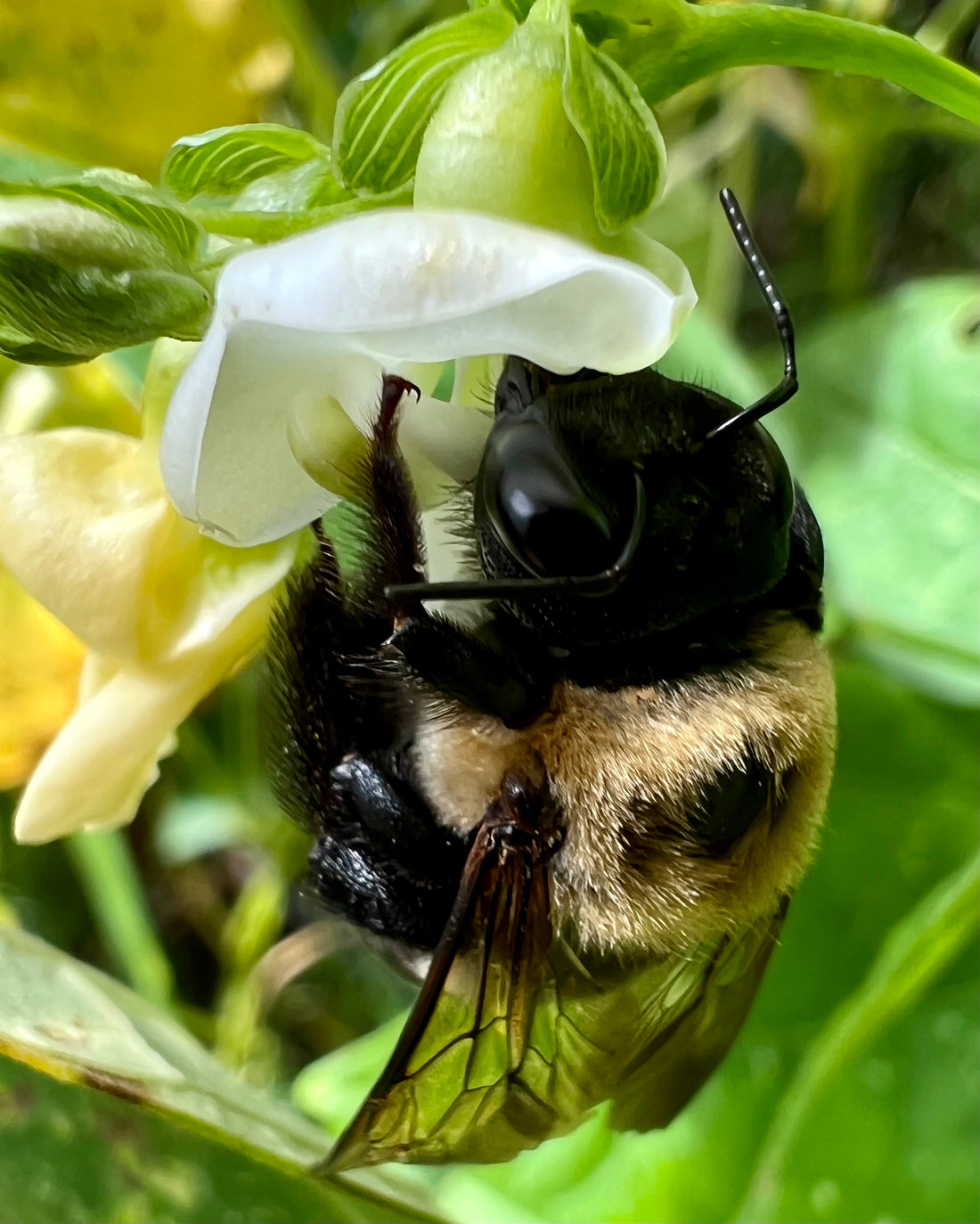The Eastern Carpenter Bee (Xylocopa virginica) is a large bee native to the eastern United States and parts of Canada. They are often mistaken for bumblebees due to their similar appearance, but unlike bumblebees, carpenter bees have a shiny, hairless abdomen. Despite their size and somewhat intimidating appearance, they are solitary and non-aggressive, making them excellent pollinators to watch and coexist with.
Like many other bees, Eastern Carpenter Bees are effective pollinators. As they forage for nectar and pollen, they inadvertently transfer pollen from one flower to another, facilitating the fertilization process and enabling plants to produce fruits and seeds. This natural symbiosis between bees and plants is vital for maintaining biodiversity and the health of our ecosystems.
One of the reasons Eastern Carpenter Bees are exceptional pollinators lies in their unique pollination technique. Unlike honeybees that rely primarily on their tongues to access nectar, carpenter bees have specialized mouthparts that allow them to "buzz pollinate." When they land on a flower, they use their powerful wing muscles to vibrate and dislodge pollen from the flower's stamens. This vibrating motion releases a cloud of pollen that adheres to the bee's body, ensuring it will be carried to other flowers as they continue foraging.
Eastern Carpenter Bees are especially crucial for the pollination of native plants. Many native plant species have evolved alongside these bees, creating intricate relationships that benefit both parties. Some native plants have even developed specific adaptations to attract carpenter bees, such as providing sturdy flowers that can withstand the bee's vibrations during pollination. By helping to pollinate native plants, these bees contribute to the preservation of indigenous flora and the diverse array of wildlife that depends on these plants for food and shelter.
Despite their importance, Eastern Carpenter Bees face challenges that affect their populations, including habitat loss and pesticide use. To ensure their continued role in pollination, it's essential for us to prioritize conservation efforts. Simple actions like providing nesting sites, planting pollinator-friendly gardens with native plants, and reducing pesticide use can significantly contribute to their well-being.

